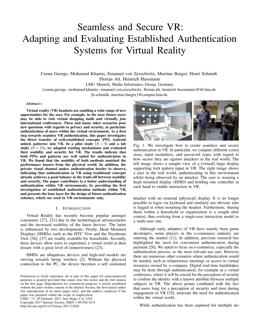Virtual reality (VR) headsets are enabling a wide range of new opportunities for the user. For example, in the near future users may be able to visit virtual shopping malls and virtually join international conferences. These and many other scenarios pose new questions with regards to privacy and security, in particular authentication of users within the virtual environment. As a first step towards seamless VR authentication, this paper investigates the direct transfer of well-established concepts (PIN, Android unlock patterns) into VR. In a pilot study (N = 5) and a lab study (N = 25), we adapted existing mechanisms and evaluated their usability and security for VR. The results indicate that both PINs and patterns are well suited for authentication in VR. We found that the usability of both methods matched the performance known from the physical world. In addition, the private visual channel makes authentication harder to observe, indicating that authentication in VR using traditional concepts already achieves a good balance in the trade-off between usability and security. The paper contributes to a better understanding of authentication within VR environments, by providing the first investigation of established authentication methods within VR, and presents the base layer for the design of future authentication schemes, which are used in VR environments only.
Publication
 |
Ceenu George, Mohamed Khamis, Marinus Burger, Henri Schmidt, Florian Alt und Heinrich Hussmann. Seamless and Secure VR: Adapting and Evaluating Established Authentication Systems for Virtual Reality. In Proceedings of the Usable Security Mini Conference 2017. Internet Society, San Diego, CA, USA. [Download Bibtex] |